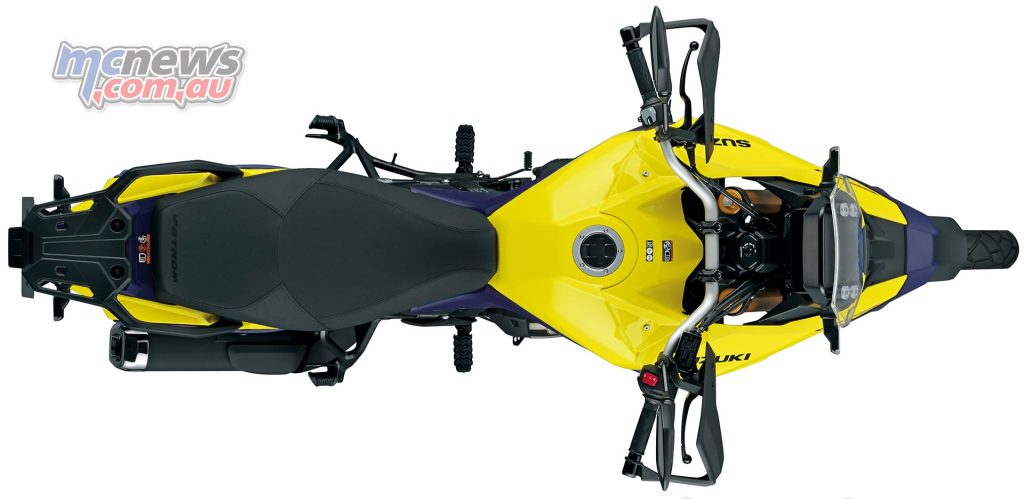Suzuki V-Strom 800DE Review
Suzuki’s new V-Strom 800DE is the most dirt-ready V-Strom to come out of the Suzuki factory thanks to its 21-inch front, 220 mm of ground clearance and 220 mm of travel through its adjustable Showa suspension. We recently braved the elements in New Zealand to sample the newest kid on the adventure-touring block.
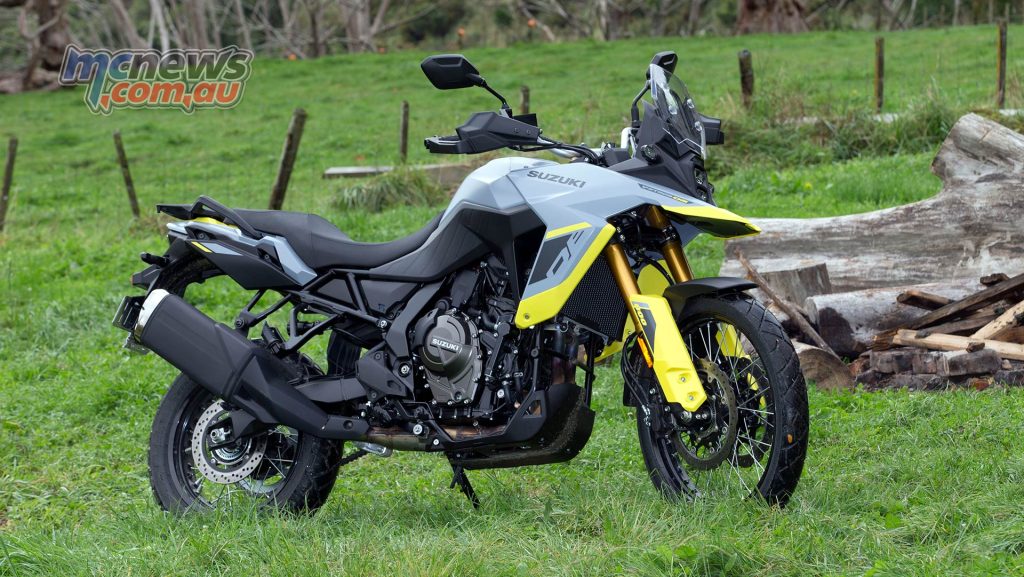
An adventurous 275 kilometre loop took us from the seascapes of Whanganui to the heights of Waiouru and back down again via different tracks that offered plenty of those picture-book quality scenic vistas that New Zealand is famous for. Spectacular watercourses and lush green countryside every which way you look. It really is one of the most beautiful countries on the planet. Kiwis generally make for pretty good company, too…
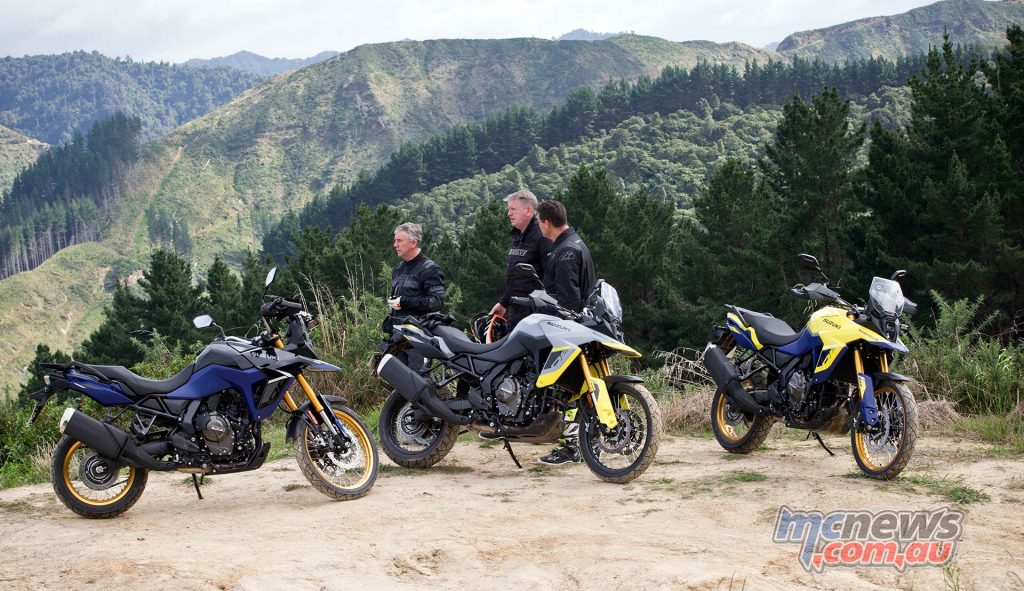
The V-Strom 800DE debuts Suzuki’s all new 776 cc parallel twin that it shares with the new GSX-8S nakedbike.
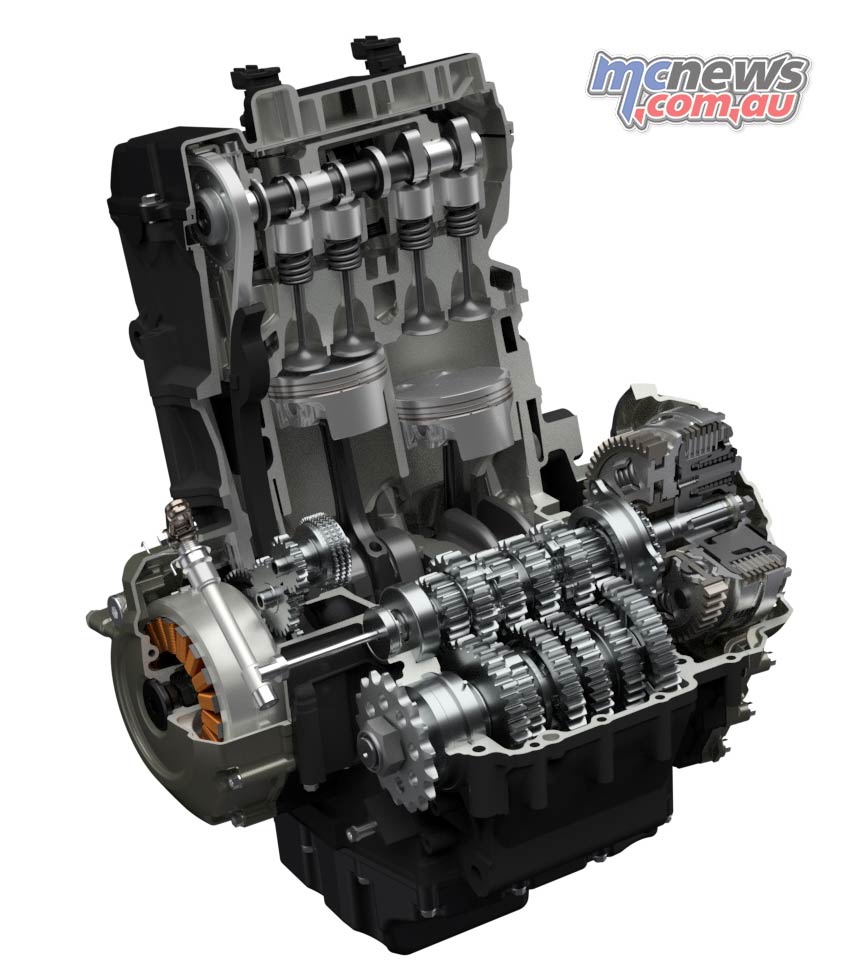
The engine is a willing performer with plenty of flexibility and an engaging character. The new mill has 83 ponies compared to the 71 ponies of the full power V-Strom 650.
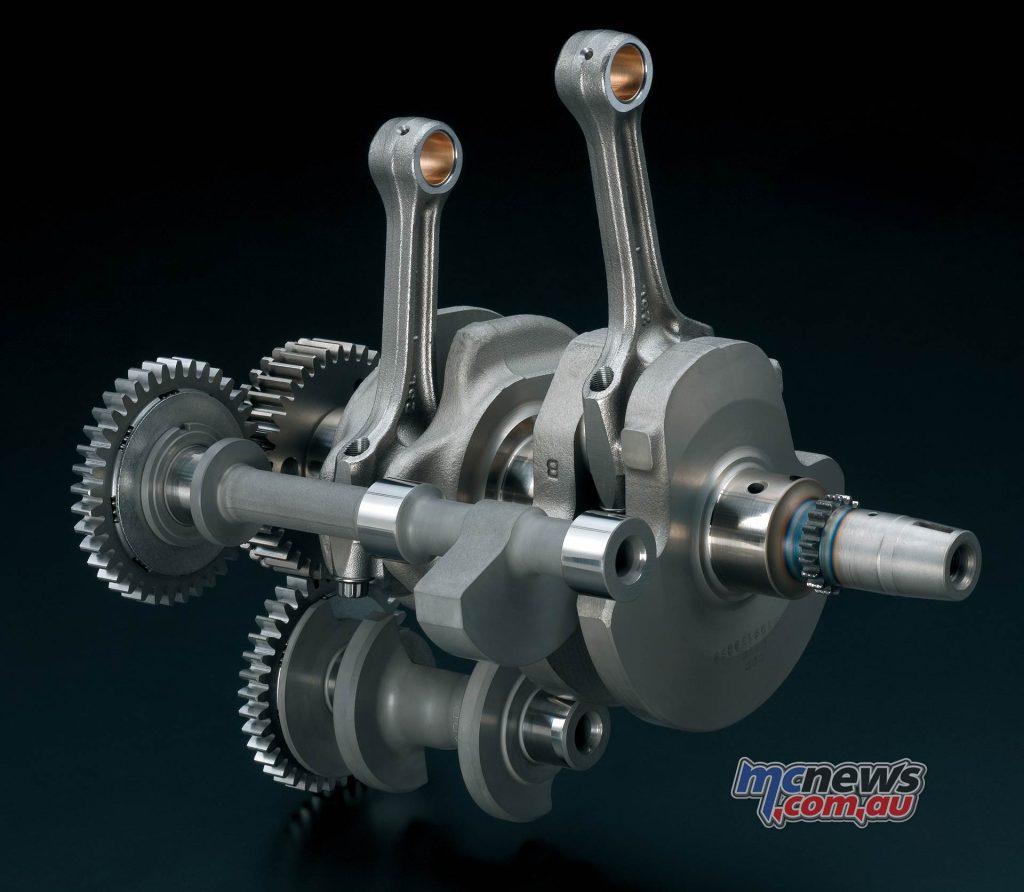
Peak torque of the new 270/450-degree parallel twin is a healthy 78 Nm at 6800 rpm, which is 25 per cent more than the V-Twin 650. The 650 will continue to be available in Australia in both LAMS and full-power versions, alongside the V-Strom 250SX and the recently launched new 1050 and 1050DE models.
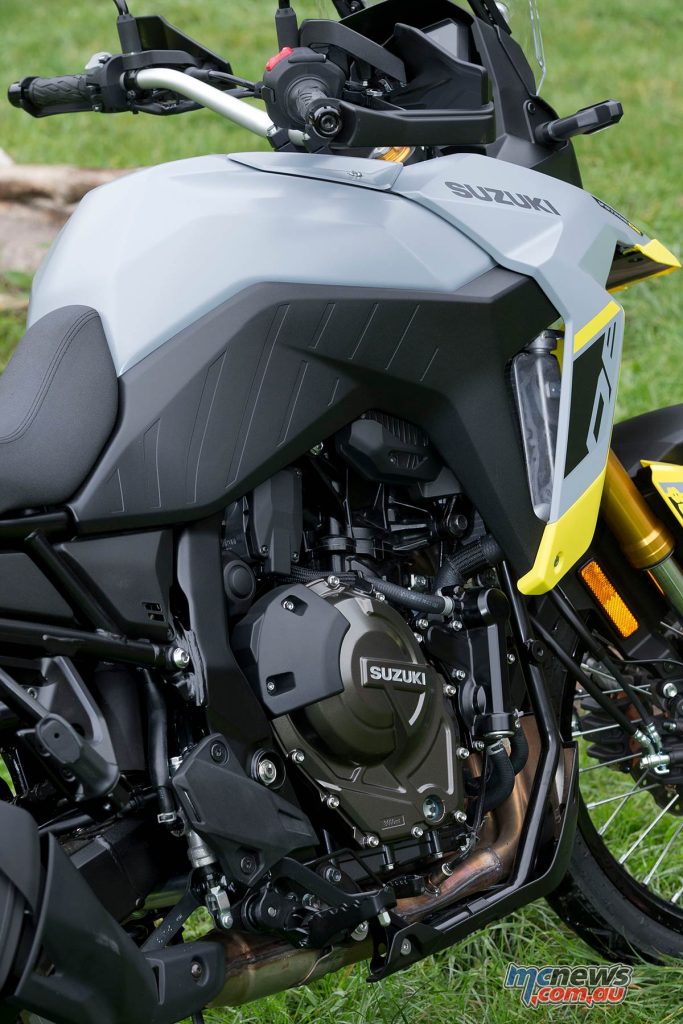
Power tails off after 9000 rpm but the 800DE will still rev well past that if you can’t be bothered changing gears. It turns 4500 rpm at 100 km/h, 5000 rpm at 110 km/h and accelerates well to around the 140-150 km/h – and will go close to 200 km/h if you hang on long enough.
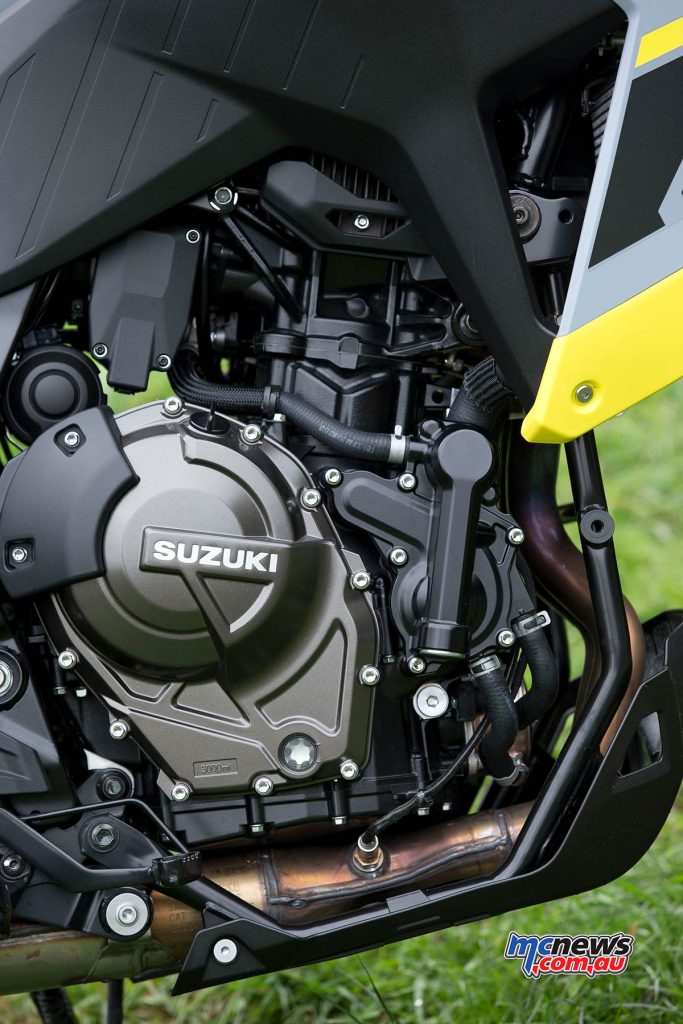
All the riding modes provide full power but are just delivered it in different ways. The engine is flexible, smooth and cultured, as are all modern Euro5 powerplants which have to be so well engineered and fuelled in order to meet the ever-tightening environmental demands. Consumers win too though, as this has forced manufacturers to up their engine game and we all benefit.
It pulls well out of the basement and there are no discernible steps through the mid-range – just clean, linear drive before flattening off at the top end. Very Japanese… It is also extremely resisting to flaming out, which makes your life easier when doddling about in the rough stuff.
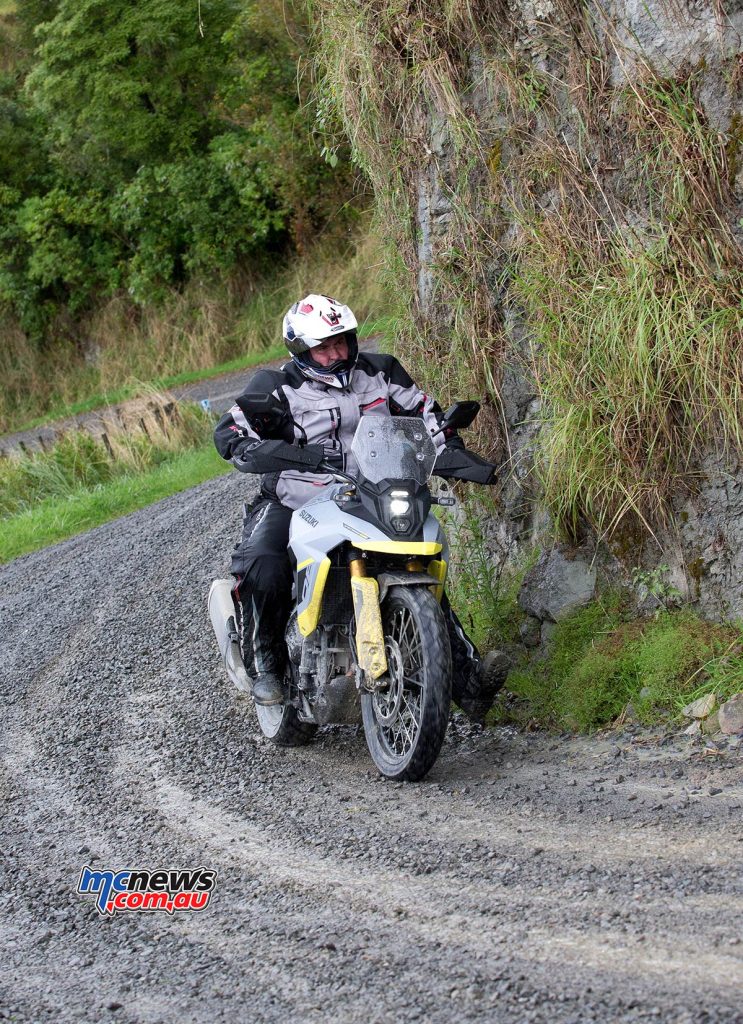
The air-filter is easily accessible under the seat, which means deep water crossings are off the to-do list but at least servicing will be a piece of cake. It would benefit from an oiled pre-filter in dusty conditions, and I am sure the aftermarket will have us catered for shortly after the bikes arrive in a couple of months.
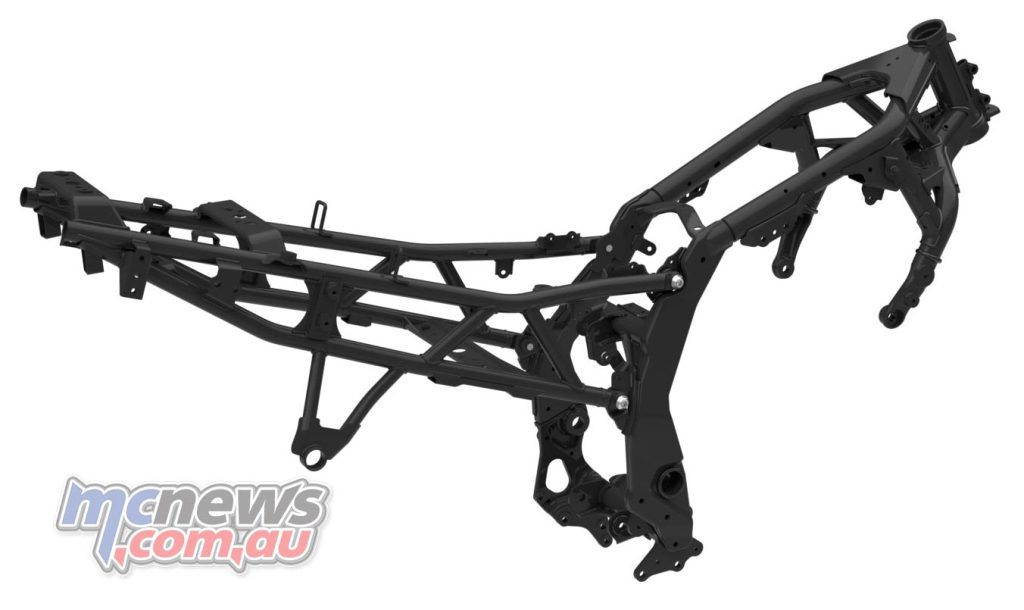
A generous 20-litre fuel tank should realise a touring range of around 400 kilometres in most conditions. Vibration is non-existent thanks to an innovative dual counter-balancer system that doesn’t add to engine bulk dimension wise. Like the new 1050DE, the 800 gets the new dirt-oriented gravel mode that allows a fair bit of rear wheel slip before cutting the fun.
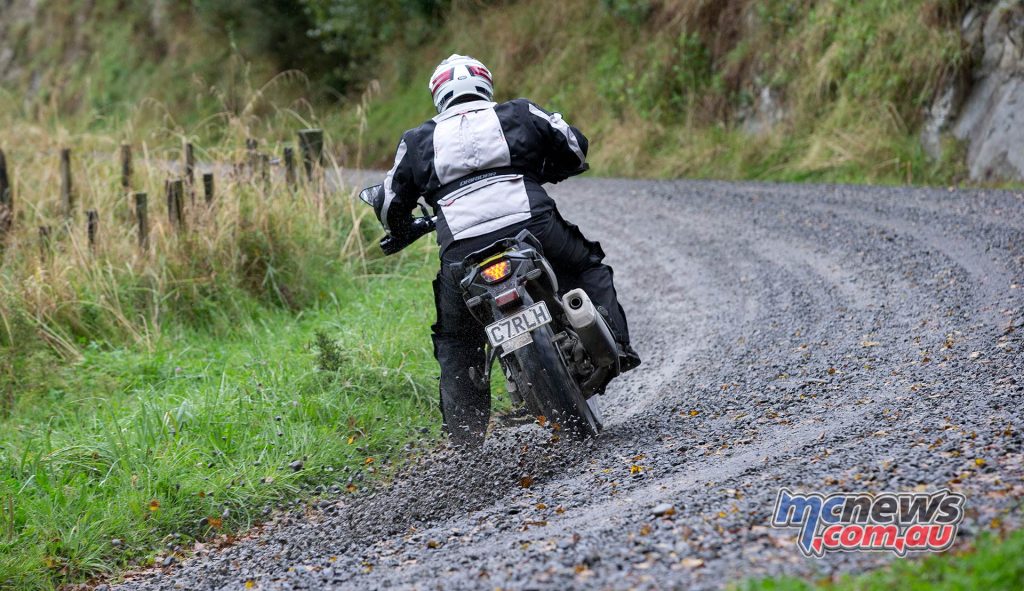
The 800DE comes standard with a new top shelf electronics kit, including switchable ABS, and if you turn the four-stage traction control off it stays off – even if you turn the bike off and start it again, yay! A two-way quick-shifter standard, spoked rims, radiator guard, plastic bash-plate, twin 310 mm discs up front, new five-inch colour TFT dash… That all adds up to some decent value…
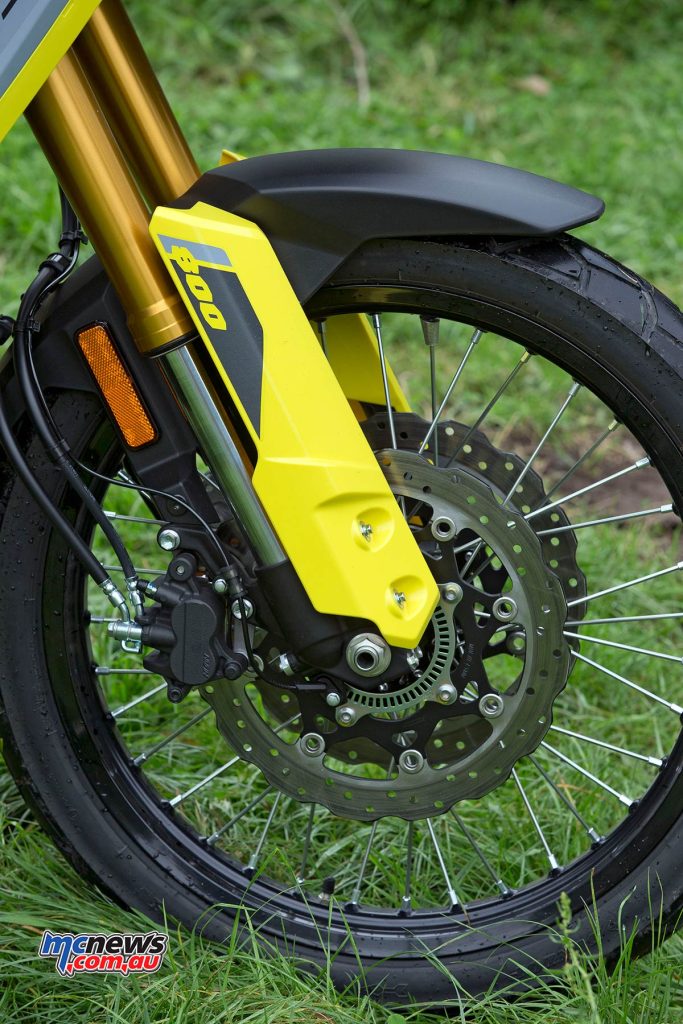
I found the two-way quick-shifter on the 800 more deft than on the 1050, presumably as this new powertrain was designed from the outset for such a system.
The bike works so much better in the dirt than any of the 650/1000/1050 models past and present, including the latest new 1050DE.
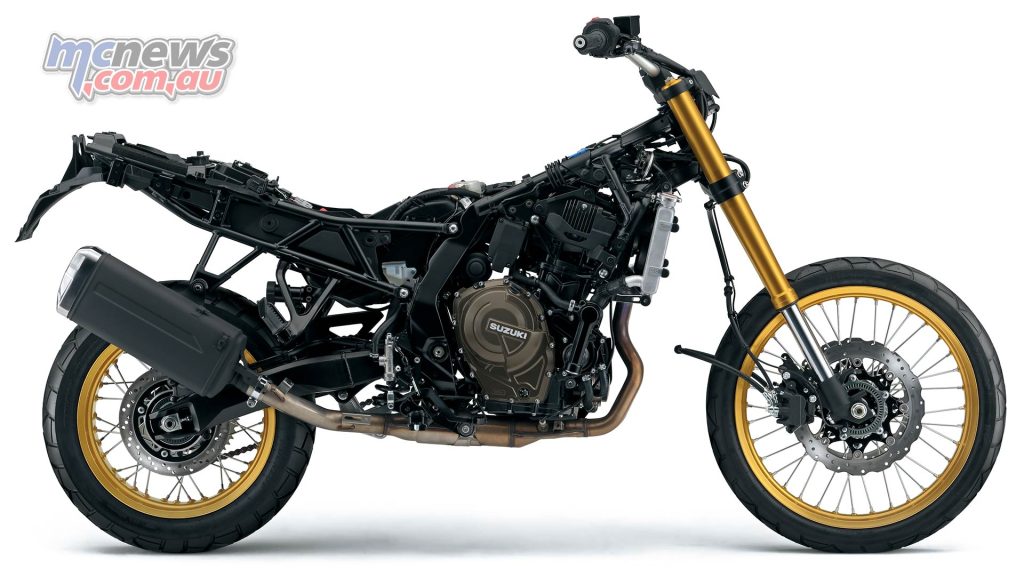
The suspension on the 800DE is worlds apart from anything we have seen before on a V-Strom. The fully adjustable Showa front-end has a generous 220 mm of travel which is matched at the back by a preload- and rebound-adjustable shock. That is almost three inches more travel than the 650, and two inches more than the 1050DE. In the rough stuff this all adds up to a ride that is much more conducive to heading off the beaten track, but also proves very sure-footed and comfortable on the road.
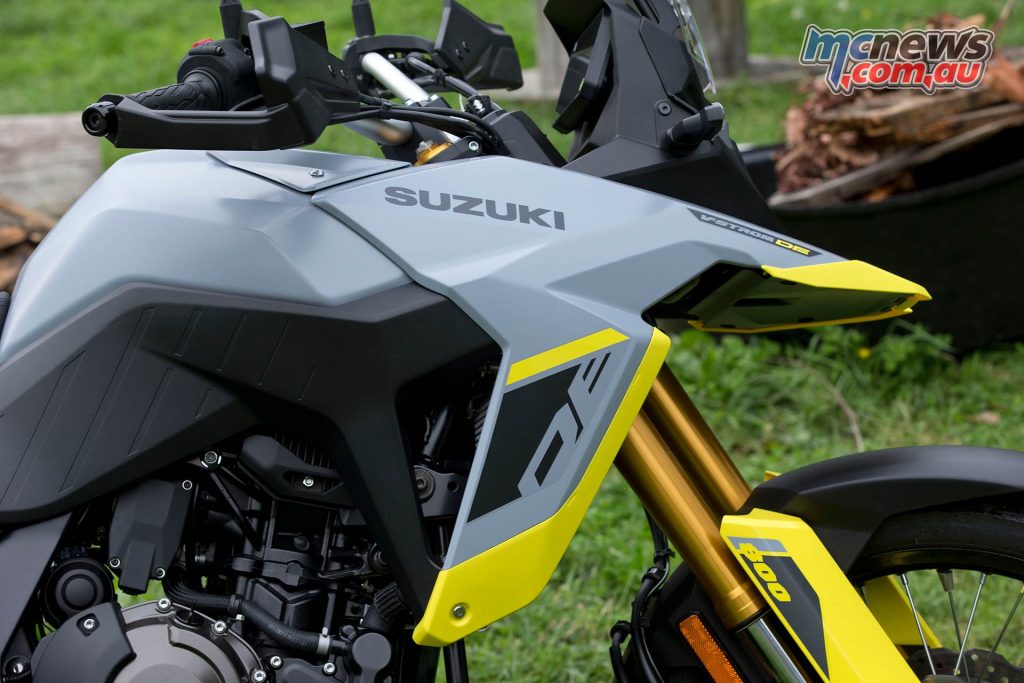
The weather conditions on the launch were horrendous, so we weren’t exactly hitting obstacles hard. The rear shock struggled a little over corrugations and, due to the lack of traction, I couldn’t exactly get up to a speed where the suspension matched the frequency of the corrugations which would have probably cancelled them out. Overall though I think the suspension is better than most of the competition anywhere near this price point.
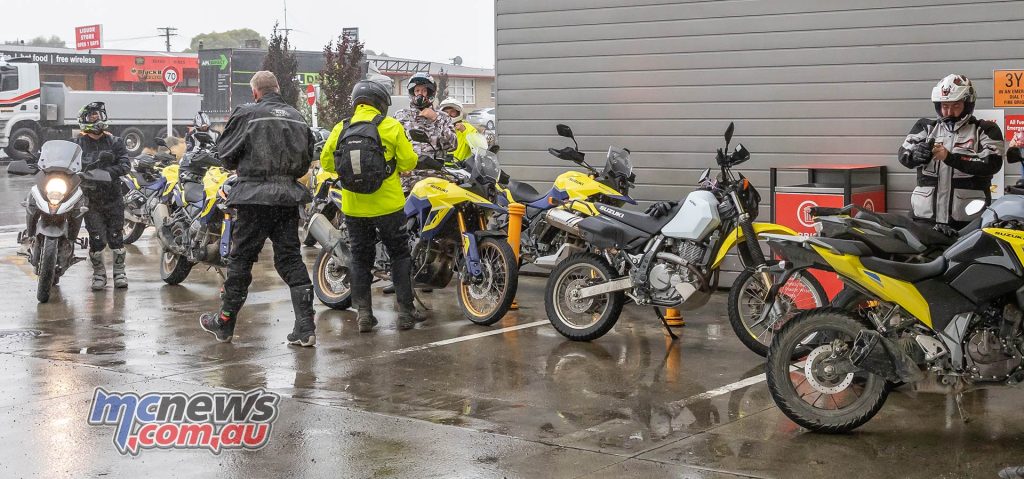
Considering what they had to put up, with the dual-purpose Dunlop Trailmax Mixtour hoops did a good job. They let you know when they were going to let go, and I had some huge front-end slides in slop while almost upright. It was probably more through good luck than fine judgment that I didn’t end up on the deck a few times, but as the front started to fold the tyre would then grab enough purchase on the edge of the front to be able to prevent a crash, just when you thought it was gone for all money and bracing for impact.
The rain was so fine and in the slop my speeds at times so slow that the water was not clearing from my visor, which saw my nerves a bit frazzled by the time we got back to bitumen. I would have been seeking therapy if having to brave those conditions on other V-Strom models, save for perhaps the 250.
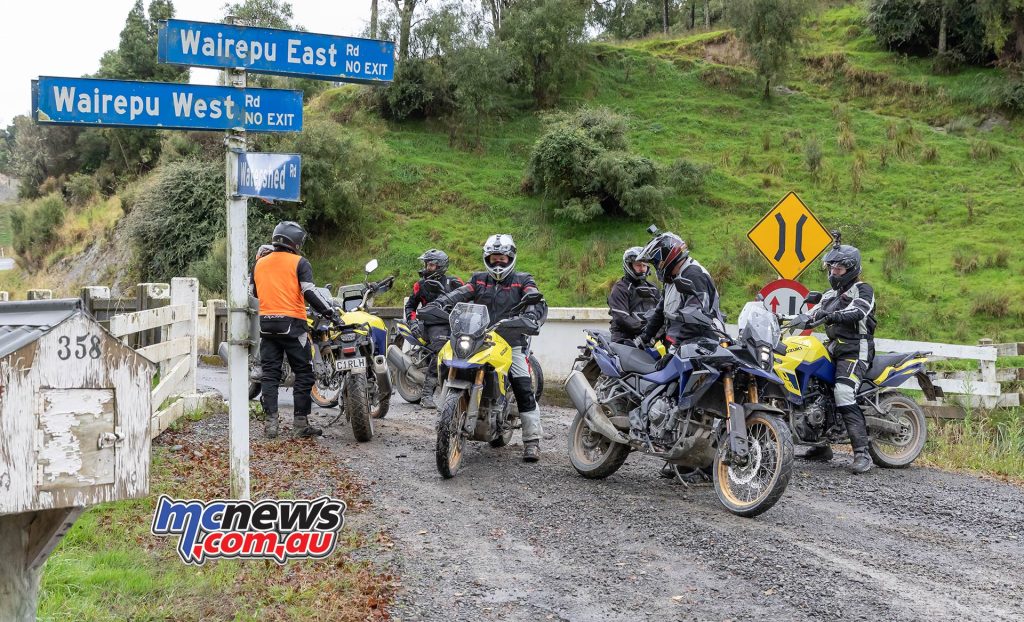
Even in comparison to the new off-road focussed 1050DE, the 800DE is so much more playful in the dirt.
The 800 debuts a new steel frame that replaces the sportsbike derived twin-spar alloy backbone that helped make the 650/1000/1050 V-Stroms such formidable weapons on the road. It also runs a longer swingarm than its siblings. The 800 handles really well and carries its narrow 21-inch front hoop through turns on the tarmac with far more poise than I found the new 1050DE model to exhibit. The rear is a 150/70-17.

Due to the ease of packaging the diminutive parallel twin in comparison to the 1000/1050 V-Twin powerplants, the 800 seems to carry its weight so much better. The 800 is just over 20 kg lighter than the 1050DE, but it feels almost double that thanks to a lower centre of gravity and more amenable seat height. It even feels smaller and just more manageable in every way compared to big brother.
Where the 1050 feels as though it started life with a different role that is now adapted to a new purpose, the 800 feels like the clean sheet design from the ground-up like it indeed is. Suzuki’s first new model in five years.
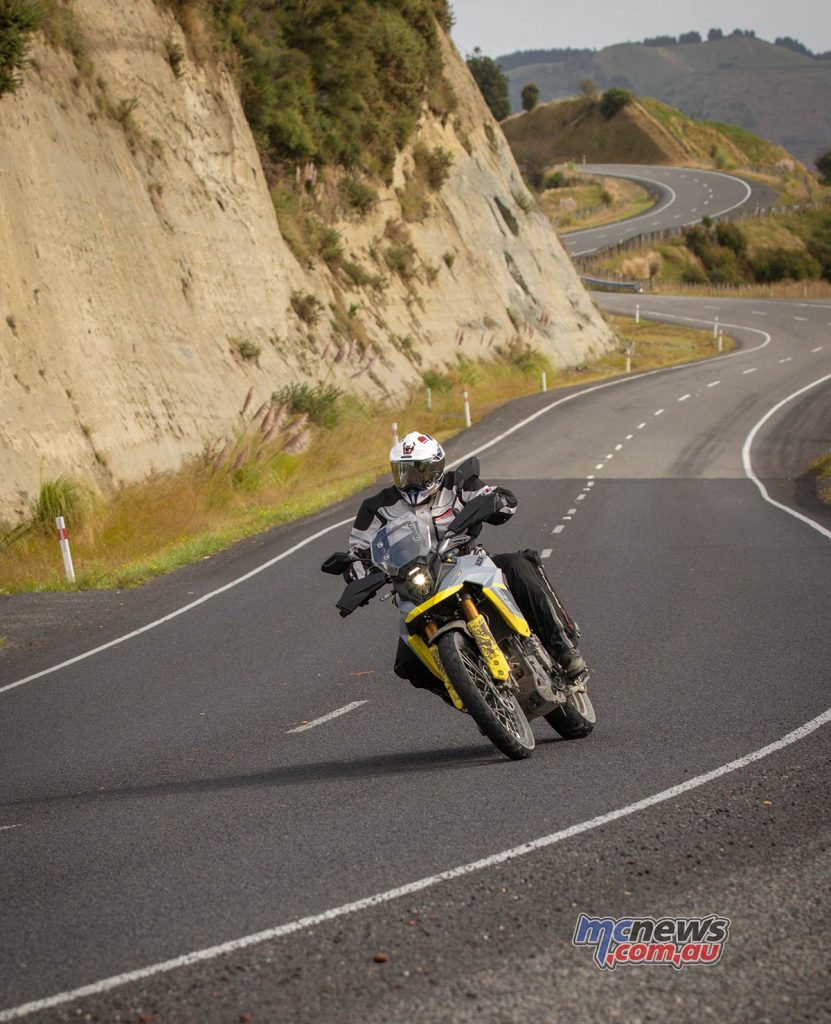
The 800 manages to feel as light and manageable as the 650, but with massively improved off-road performance. The 800 still scythes from apex to apex with grace and surefooted stability, but on a tight and twisty bit of tarmac a 650 will still have its measure as that model has always punched so far above and beyond what you might expect. And I’m talking against bikes running 17-inch fronts, let alone the 21-inch equipped 800. If you know, you know… But once off the beaten track there will be no comparison between the two.
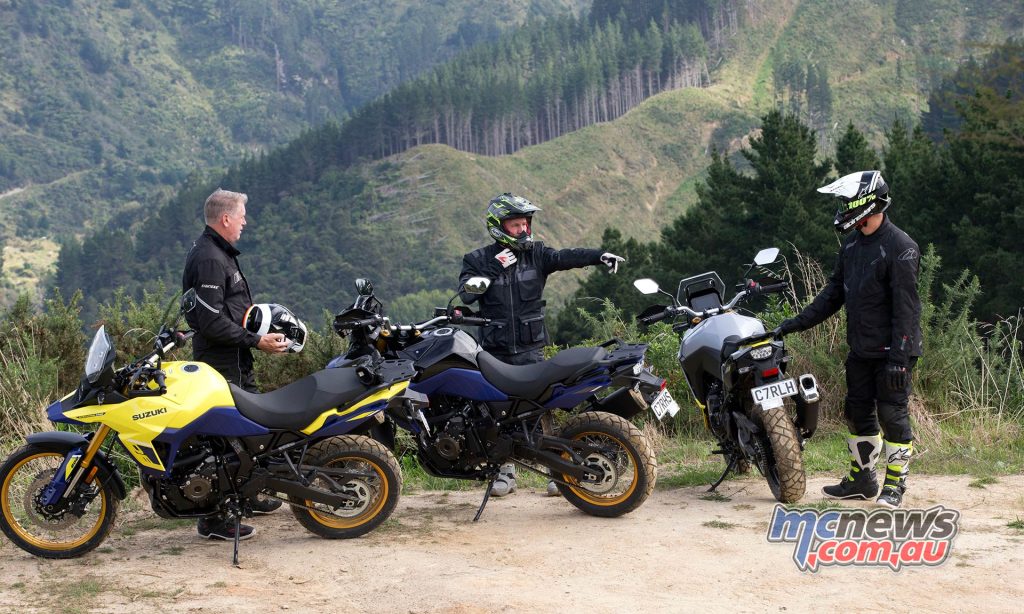
Nissin provide the stoppers on the 800 and, while they work well enough, they don’t have the ferocious stopping power of the radial Tokico hardware found on big brother. That is no bad thing as this is just another factor that makes the 800 a more relaxed and easy-going ride than its more serious sibling.
Unfortunately, the integrated luggage mounts on the sub-frame that grace the 1050 as standard are an optional extra on the 800. Panniers are available as an option, but if you are accustomed to reading my diatribes on bikes you will know how much I hate pannier racks that have great hunks of metal swinging a mile away from the centreline of the bike. They generally turn a spritely horse into an ungainly donkey. Thus I would be plumping for the sub-frame lugs and plastic cases.

They might hold a little less volume than the big alloy boxes but the plastic bags are rated to carry more weight.
They might hold a few less litres than the alloy boxes but actually have a higher weight rating, Suzuki suggests a 3 kg weight limit for the alloy boxes but a more generous 5 kg limit for the plastic panniers.
The new model shares the brilliant five-inch TFT display that debuted on the 1050 models released this month. The instrumentation and interface are intuitive, informative and fit for purpose. However, there’s no cruise control or heated grips, which are a couple of black marks against it.
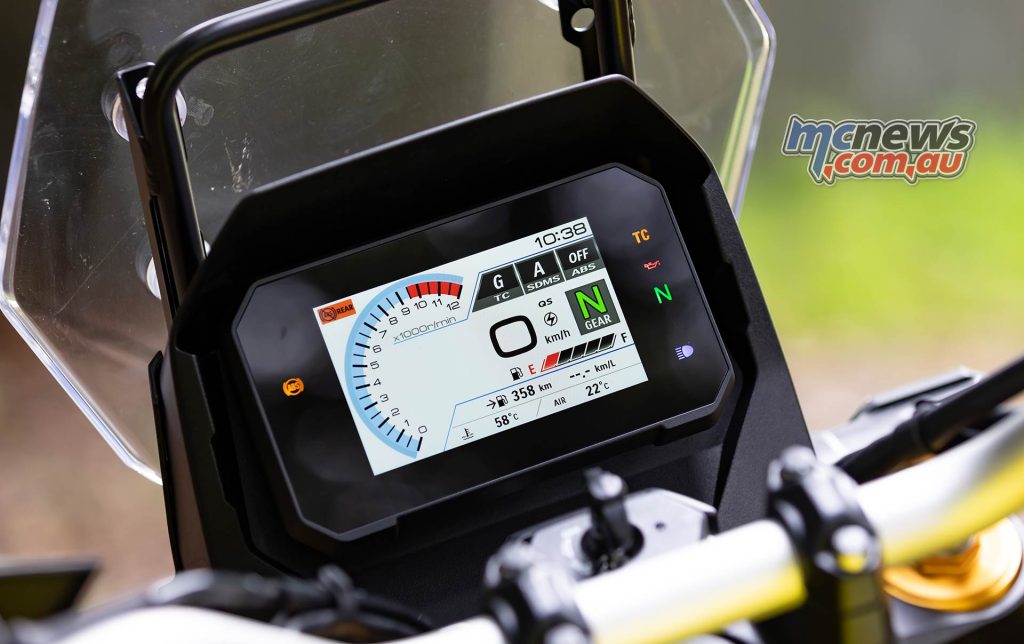
On the upside a USB port is provided up front, supplemented by an old-school 12-volt outlet under the seat. Hand-guards are a welcome addition and the screen works reasonably well despite its relatively tiny size. I am sure a more generous screen will eventually be available via the options list, and that would certainly be welcome for highway work.
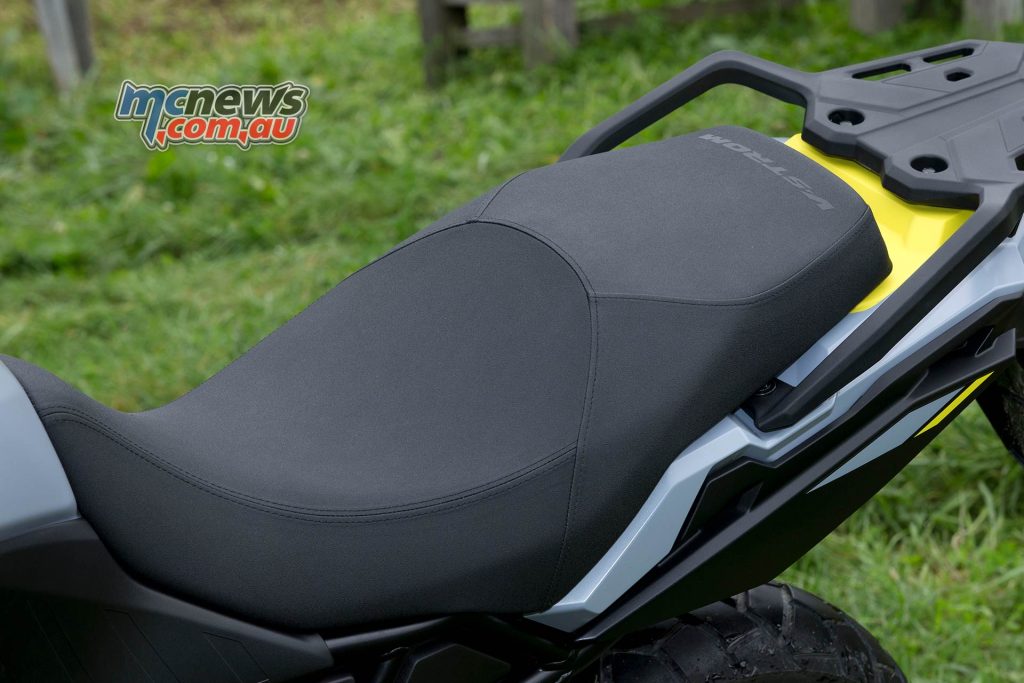
The seat is supportive and, combined with the quality long-travel suspension the 800DE, wafts along the road while isolating the rider from road imperfections. This is a true long-distance mount that due to that long travel suspension prove more comfortable on the road than the 1050.
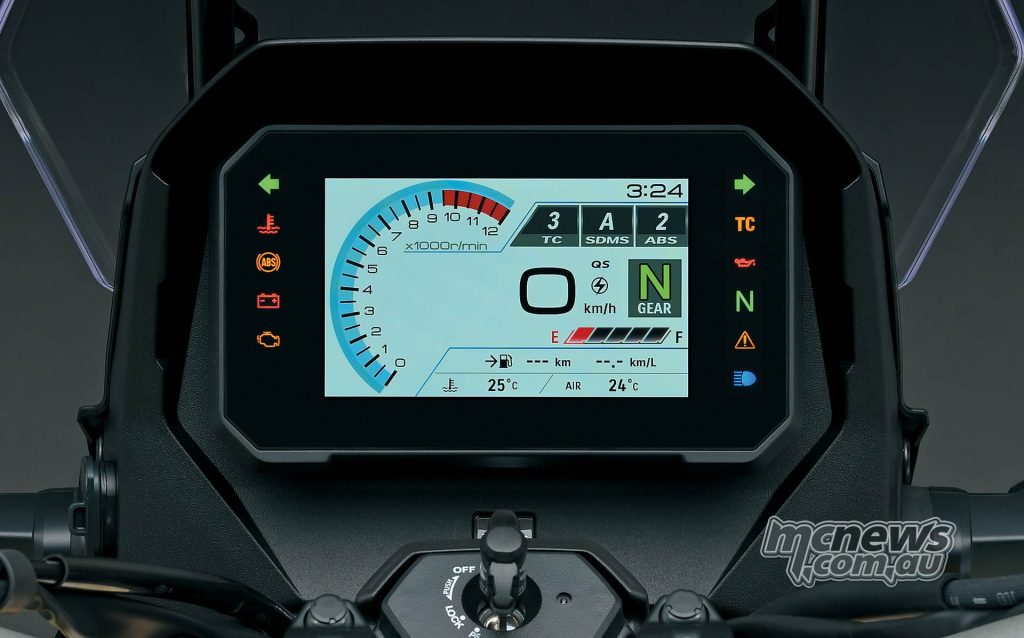
This is a much nicer motorcycle than previous BMW F 800 models, and is certainly a value-packed challenger to the current well-credentialed F 850 GS. At $18,590 ride away the Suzuki treads a mid-line in the value stakes between the $20,285 BMW and $16,490 CFMoto 800MT Explore.
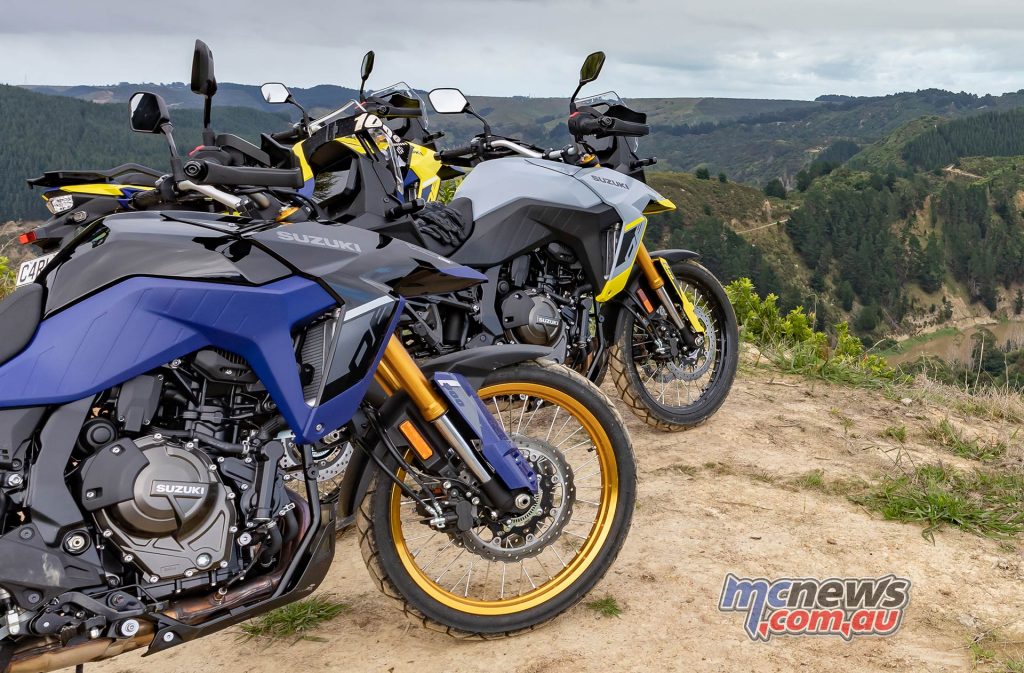
It offers a fair bit more bang for the buck than Yamaha’s $19,999 no frills more dirt-oriented Tenere 700 when it comes to creature comforts and tech. The Yamaha is essentially a big dirt-bike you can tour on, while the above-mentioned are more cosseting long-distance mounts you venture off-road on.
The Suzuki stacks up reasonably well against Honda’s aggressively priced new Transalp 750, which is set to hit the market in a few months at around 16k ride away, undercutting even the CFMoto. We didn’t see that coming…
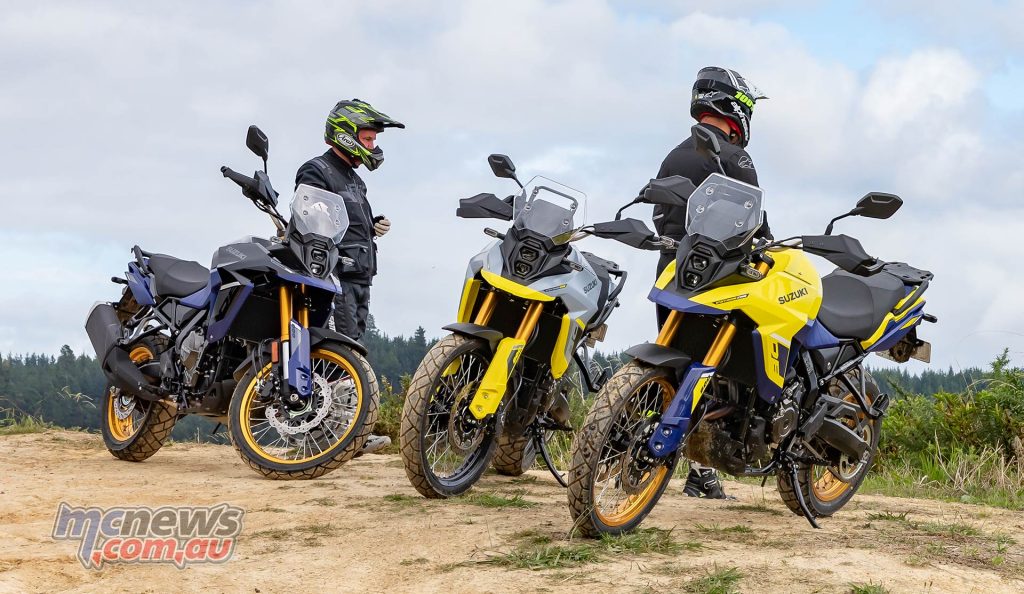
Both the Yamaha and the Honda are considerably lighter than the Suzuki, BMW or CFMoto. BMW leads the way in the warranty stakes with a car-like five-year coverage period, but Suzuki still bests most of the rest with its three-year warranty. Actually, CFMoto now also offer a three-year warranty. There are also of course the hugely competent Triumph Tiger 900 Rally Pro and Aprilia Tuareg 660, but those bikes reach up into another price point all together, same goes for KTM’s 890 Adventure and Husky’s Norden.
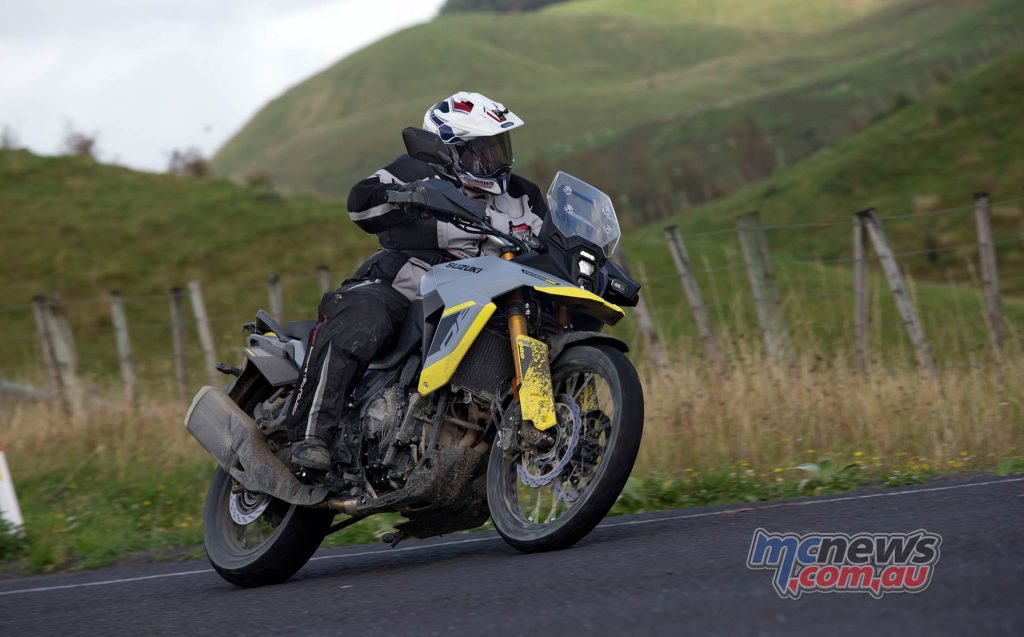
The 800 is engaging, fun, competent, comfortable and undemanding. A great option for those riders who lack confidence in the dirt, but still want a comfy long-distance adventure mount with decent performance and amenity on road. The adjective I keep coming back to is ‘playful’, I found the 800DE to be exactly that. It is also super comfortable, engaging, affordable, approachable and a great option for both experienced and relatively inexperienced riders.
To add more to the value equation Suzuki is throwing in an alloy top-box kit valued at over a grand for anyone who pre-orders the $18,590 ride away machines before it arrives in June, a nice reward for early adopters.
2023 Suzuki V-Strom 800DE Specifications
- Engine – 4-stroke, 2-cylinder, liquid-cooled, DOHC, parallel-twin
- Bore x stroke 84.0 mm x 70.0 mm (3.3 in. x 2.8 in.)
- Engine displacement 776 cc (47.4 cu. in.)
- Compression ratio 12.8 : 1
- Claimed Power – 83 hp (62 kW) at 8500 rpm
- Claimed Torque – 78 Nm at 6800 rpm
- Induction – EFI, 2 x 42 mm throttle bodies, Rbw
- Lubrication system Forced feed circulation, Wet sump
- Transmission – Six-speed, two-way quick-shift standard
- Suspension Front – Fully-adjustable 45 mm inverted forks, 220 mm travel
- Rear Suspension – Adj. pre-load and rebound, 220 mm of travel
- Rake / trail – 28° / 114 mm (4.5 in.)
- Brakes – 2 x 310 mm rotors (F), 260 mm (R)
- Tyres – 90/90-21 (F) 150/70 (R)
- Fuel tank capacity 20 L (5.3 /4.4 US/lmp gal)
- Overall length 2,345 mm (92.3 in.)
- Overall width 975 mm (38.4 in.)
- Overall height 1310 mm (51.6 in.)
- Wheelbase 1570 mm (61.8 in.)
- Ground clearance 220 mm (8.7 in.)
- Seat height 855 mm (33.7 in.)
- Kerb mass 230 kg (507 lbs.)
- Arrives – Mid 2023
- RRP – $18,590 Ride Away
